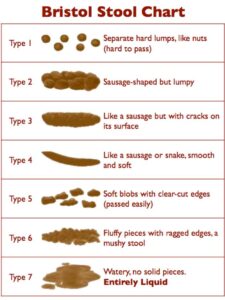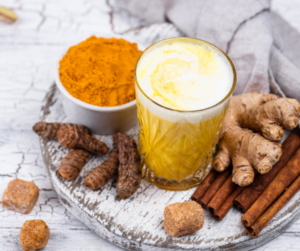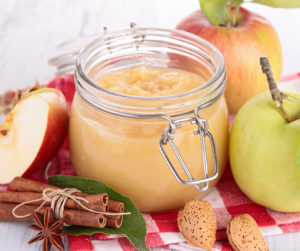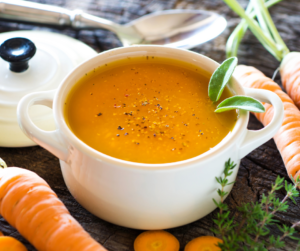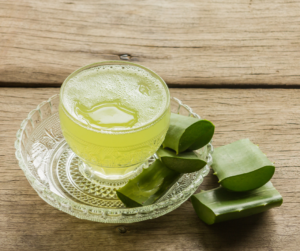By Claire Bacon, ACN, CNC
OMG… Are we really going to discuss our poop?!? Well, yes… yes we are! Because it has become glaringly obvious to those of us in the healthcare and health-coaching fields that lots and lots of people are having major troubles with their poop, and most are too shy to speak up about it. And a high percentage of children need help here, too! So here I am, here to point out a few things that you can investigate in your own private time. We are all on a mission to find our “perfect poop”.
I do apologize if any of this is TMI. But my purpose here is to inform those of you who may be missing a serious health warning, and get you to do something about it. Remember, it is always easier to turn a problem around earlier in the process, before weeks or years of medications and procedures complicate the situation.
Joining the “One Wipe” Club
So let me ask a show of hands… how many of you are in Dr. Bob’s “One Wipe” Club? It is somewhat of a secret society, if you don’t know about it. There aren’t any monthly meetings, no membership dues, and it’s totally based on the Honor System. But don’t think that means it is any less than an exclusive, VIP cream-of-the-crop type club! When you become a one-wiper, you will know it – and you will want to shout it to the world! All it takes to become a member is to incorporate daily strategies to improve your gut health… until one day… you’ll know YOU’RE IN! And you’ll be sure to get a high five from Dr. Bob at your next visit! (No need to prove it, please leave your brown baggies at home).
Normal vs. Not Normal
Part of the problem, and why so many people aren’t One-Wipers, is that everyone has come to understand their own version of “normal”. Some people think it is normal to only poop once or twice a week. For some people, they are at the opposite end of the spectrum, alternating between diarrhea and constipation, with no sense of regularity or cause & effect based on what they are eating. No one is really talking about it at cocktail parties or kids’ soccer games, but if we were open about these things, we would learn that gastrointestinal problems are a huge problem (and a huge cost) to our society.
Did you know, that approximately 70 million people in the US are affected by some sort of gastrointestinal distress? Gastric dysfunctions resulted in 48.3 million ambulatory care visits in 2010. Approximately 63 million people were affected by chronic constipation in 2000. And among children, up to 29.6% may suffer from constipation! Approximately 20% of our entire population suffers from acid reflux. And can you believe that 75% of people older than 45 have to deal with hemorrhoids?
Remember, just because a symptom is common, doesn’t mean it’s normal.
Bristol Stool Chart
Maybe the best illustration of what’s normal and what’s not normal in your toilet can be found here in the Bristol Stool chart:
Basically, if you are seeing something like Types 3, 4, or 5, that’s normal and you’re probably doing just fine. But if you’re seeing the other types on a regular basis, or seeing anything more distressing like mucus or blood in your stool, it’s time to do some experimenting with your diet and lifestyle, and see where you can make some significant improvements.
Good Signs of a Perfect Poop…
What are the best physical signs that your stool is normal? We want to look for a medium-brown color, a smooth and soft shape, either straight or S-shaped like your colon. Your poop should be about 1 to 2 inches diameter, and anywhere from 6 to 18 inches long. It should make a gentle drop into the water (not explosive) and should have a natural, earthy odor. You should see that it has a uniform texture (not seeing undigested food) and it should sink to the bottom of the bowl. You may be surprised sometimes at an orange-reddish color if you have been eating a lot of beets, or a very green color if you have added in Gastrazyme, Chlorophyll Complex, or a greens powder like Nitrogreens to your smoothies. Isn’t it fun to see great changes like this??
If you’ve ever said, “Honey! You’ve got to come see this poop!” then you are already aware how great it is to be so proud.
Functional Signs It’s Not Perfect Poop…
On the other end (pun intended) of the spectrum, some signs should clue you in that something is going wrong.
- If you are seeing pale white, light gray or yellow stool, that could be a sign of impaired bile flow and an infection or blockage in the liver/gallbladder/biliary system.
- Hard, pebbly rabbit poops can also be a sign of sluggish liver.
- If it is very smeary and hard to clean off, maybe you are not getting enough fiber to feed the probiotic activity in your gut.
- If you are seeing very thin, pencil-like stool, that could be caused by inflammation or a blockage in the colon.
- Mucus is another sign of inflammation, probably caused by food intolerances.
- If it floats, you can bet your fat digestion could use some work.
- And if you see black, tarry stool or bright stool, there could be some bleeding in your digestive tract.
- If you notice a very foul odor, like, “OMG, is that me?” then something in your diet really needs your attention.
So, What Can You Do?
First off, if you have been having some distress and wondering for a while what could be up, down there, then make an appointment with a gastroenterologist. It’s great to do things naturally, and of course to use your food as medicine. But it’s also great to take advantage of modern methods of diagnosis. Don’t delay seeing your doctor if your issues don’t go away quickly.
Top Ways to Achieve a Perfect Poop:
- Eliminate from your diet: wheat gluten, dairy, and any other potential sensitivity, like nuts or corn
- Increase your fiber intake from salads and vegetables (not grains). Beets are the best vegetable for mild constipation! If beets don’t appeal to you, try AF Betafood instead!
- Reduce your grain consumption, or make sure to soak grains before use
- Eliminate sugar, MSG and processed foods containing chemical additives
- Add naturally fermented foods to your diet, like Kombucha, coconut Kefir, raw sauerkraut, cultured vegetables, and/or Kim Chi. Just a little bit! If this is too difficult, you can always add a good probiotic like Prosynbiotic or Bio-Doph-7 Plus.
- Mix a little psyllium husk powder in water and drink.
- Add flax seed or chia seeds (soaked) to your smoothies
- Drink more water – always in between meals
- Exercise – bounce, jump and run so gravity can help move things along
- Address emotional burdens with Neuro-Emotional Technique (NET) to learn how to “let go”
- Check your prescriptions for gastro-intestinal side effects.
Be careful with probiotics and prebiotics. Too much inulin or chicory root too fast, or even too much Kombucha, can give you a huge bloated stomach and maybe even blow down a three-story building.
Do you have an amazing testimonial about how your gut has been healed? Send us your story! We are planning new ways to share your awesome healing experiences in our office. Just send us an email or turn in a hard copy to our front desk. We promise to keep your name anonymous.
Healing Recipes for Perfect Poop
In the following sections, I have compiled some healing recipes you may like to try, to help boost your natural healing power in your gut…
Anti-inflammatory Jamu
Jamu is a traditional herbal drink originating from Indonesia. It is very potent, and so you only need a small amount – about 1 or 2 shot glasses’ worth per day. Jamu can be used to boost the immune system, to support digestion, to ease constipation, to warm the body, and/or to support hormone balance.
- 1/2 cup Turmeric root – fresh or dried
- 1/2 cup Ginger root – fresh or dried
- 2 tbsp Lemon or Lime – juice or peel
- 1-3 tsp Honey, to your taste
- 1/4 cup Tamarind paste (optional)
- 4 cups water for cooking
- Sparkling water to serve (optional)
Puree the ginger, turmeric and water in a blender. Put the ginger-turmeric mixture in a pot with the optional tamarind paste, and bring to a simmer. Put it on the lowest heat setting, and simmer 25 minutes. Remove from heat, and let it cool for about 10 minutes. Once cool, strain the mixture into a glass jar. Stir in the lemon/lime juice and honey. Let cool completely before storing in the fridge.
To drink it as a shot, put 2 to 3 tbsp in a shot glass, and enjoy. To make a spritzer, add 2 to 3 tbsp in a large glass, and fill with sparkling water.
FYI: 1″ fresh turmeric = 1 tbsp grated turmeric = 1 tsp ground turmeric
Natural Fiber Recipe
Many fiber recipes call for wheat bran; however, we know that wheat is a highly inflammatory food for many people. Let’s go with gluten-free oats instead! Although slightly harder to find, gluten-free oats are much more tolerable for a sensitive gut. Combine the following ingredients in a glass jar:
- 1 cup gluten-free oat bran
- 1 cup applesauce
- 1/4 cup prune juice
Consume 4 tbsp per day. Store in the refrigerator.
Healing Mexican Soup with Bone Broth
First, make your homemade bone broth, according to this recipe. My preference is to make it in a crock pot over 2 days. To make the soup, combine the following ingredients:
- 2 cups homemade bone broth
- 1/4 cup minced cilantro (you want fresh cilantro, not the paste with added yucky ingredients)
- 1 avocado, diced
- 1/2 tsp Celtic or Himalayan sea salt
- 1/4 cup leftover meat, cut into bite size pieces
- dash of fresh lime juice
- 1/2 tsp apple cider vinegar (optional)
- Feel free to add any other vegetable you have on hand, like mushrooms, shallots or sliced cherry tomatoes
Add the ingredients together in a pot and simmer approximately 20 minutes, or until heated throughout.
Thai Carrot Soup
This Thai Carrot Soup is full of immune-boosting spices and vitamin A for healing.
- 2 tbsp coconut oil or ghee
- 1 onion, diced
- 1 inch fresh ginger, grated, or 1 tsp dried powder
- 1-1/2 tsp curry powder
- 1/2 tsp Celtic or Himalayan sea salt
- 3 to 4 cups homemade bone broth (see link above)
- 2 lbs carrots, peeled and chopped into coins
- 1/4 cup coconut milk
- 1 to 2 tbsp fresh lemon juice
- 1/4 tsp ground cinnamon (optional)
- 1/4 tsp ground coriander (optional)
- 1 tsp ground turmeric (optional)
- Goat cheese crumbles (optional, to taste)
- Black pepper (optional, to taste)
- Fresh cilantro (optional, for garnish)
Melt the coconut oil or ghee in a large pot. Add the diced onion and stir, occasionally, until translucent. Add the remaining ingredients. Simmer on low heat for 25 minutes, stirring occasionally. When carrots are soft, use an immersion blender to whip the soup. Transfer to bowls, and garnish with the optional goat cheese crumbles, pepper or fresh cilantro leaves. Serve with rice.
Homemade Aloe Vera Juice
Use a knife to cut open an aloe leaf, exposing the clear gel. Scrape the gel out with a spoon. Add 1 or 2 tbsp to water and mix. Enjoy!
Please note – do not overdo it and have too much aloe. This could cause stomach cramps and diarrhea. Do not consume if pregnant or breastfeeding.
Looking ahead…
We hope you have enjoyed this information, and that it inspires you to take notice of your current state of gut health! We look forward to discussing your poop in great detail at your next appointment! 🙂




